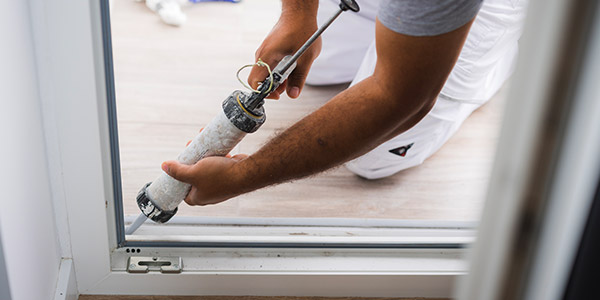Housing News
The Right Way to Caulk
March 17, 2016
When you notice gaps, cracks, joints or leaks between two elements of your home, it might be time for a little re-caulking. Caulk, a flexible substance that creates a seal between those spaces, is relatively simple to apply on your own and plays a vital role in preventing heat loss, water damage, and insect infestation.
The Importance of Caulk
Lowe's explained that in general, caulking is used around doors, windows, bathtubs, showers, plumbing, pipes, and breaks in siding. When areas like doors and windows are not properly sealed, air can easily leak into your home while heat easily seeps out.1 This loss of heat will cause your energy bill to rise. When caulk has worn away in bathrooms and other areas with plumbing, water can leak through the gaps and cause mold, rust, and other damage. All of this means more costs for the homeowner and can be easily prevented with a good caulking job.
How to Know if You Need to Re-Caulk
GE suggested three tests to help you determine if any parts of your home need re-caulking. One method is to wait until it's dark outside and shine a flashlight onto the edges of your door.2 If someone standing on the other side can see light coming through, the door needs a new caulking job. Another way: Place a dollar bill between a window sash or a door jamb. If the dollar can easily slide back and forth when the door and window are closed, the caulk has worn away. Finally, if it is cold or windy outside, wet your hand and wave it near the sides of your windows and doors. If you feel a breeze, there is a loss of energy occurring and you need more caulk.
How to Caulk
According to the U.S. Department of Energy, you should apply new caulk when the temperature is higher than 45 degrees Fahrenheit and when humidity is low.3 The moisture caused by high humidity tends to cause caulk to swell or crack, and if it is too cold outside the caulk will not bond as strongly to the surface.
Before you add more caulk, Lowe's explained, you have to make sure to remove any old, cracked caulk from the surface. You may need to use a caulk remover or a utility knife to do so. Then, make sure the surface is completely clean and place strips of tape down to help you caulk in a straight line.
For a more consistent caulking job, Lowe's recommended using a caulk gun and cartridge.4 When you have cut the cartridge tip so it will produce the caulk size you need, pull (don't push) the gun along the surface at a 45-degree angle. If you want, practice using the gun over a garbage can to get used to the rate at which it dispenses caulk. Once the caulk is applied, you can use a spoon, paintbrush, gloved finger, or caulk finishing tool to smooth it out.
When purchasing caulk cartridges, the U.S. Department of Energy said to assume you'll need about a half-cartridge for each window and door. To caulk the foundation sill of an average-sized home, you will need about four cartridges.
There are many different types of caulk from which you can choose. Lowe's explained that some are all-purpose and some are made for distinct surfaces, and GE warned homeowners not to use acrylic caulk because it is more likely to crack. Most caulk is made from latex, silicone, or some combination of the two materials. Speak to an expert at your local home improvement store to determine which type of caulk is right for your project.
Sources
1 Lowes
2 GE
3 Enegry.gov
4 Lowes





 Smart Moves Start Here.
Smart Moves Start Here.